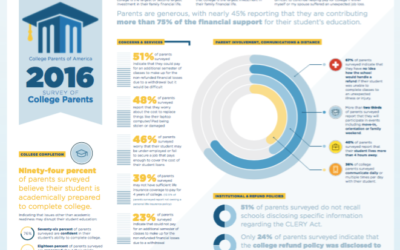

(photo by user 401(K) 2013 on flickr)
The IRS has its 2012 tax year list of tax breaks and deductions for college expenses live on the IRS Tax Benefits for Education Information Center. It’s an invaluable list that every college parent and student should have in hand when completing their respective tax returns. Below are a few of the highlights.
It’s important to note that although multi-student households can usually take advantage of per-student credits and deductions, not all families qualify for each credit or deduction, and some of the credits and deductions may not be combined (unless they are for multiple students). Be sure you’re choosing wisely and maximizing your return.
The Credits
American Opportunity Credit
The American opportunity credit helps parents and students to pay for qualifying college expenses. It was extended for tax years 2011 & 2012 and can even credit those who owe no tax.
Many of those eligible qualify for the maximum annual credit of $2,500 per student. The extension added required course materials to the list of qualifying expenses and allowed the credit to be claimed for four post-secondary education years instead of two.
The total credit is available to individuals whose modified adjusted gross income is $80,000 or less or $160,000 or less for married couples filing a joint return. The credit is phased out for taxpayers with incomes above these levels.
Lifetime Learning Credit
The lifetime learning credit helps parents and students pay for post-secondary education. For the tax year, you may claim a lifetime learning credit of up to $2,000 for qualified education expenses paid for all students enrolled in eligible educational institutions.
There is no limit on the number of years the lifetime learning credit can be claimed for each student. Thus, the lifetime learning credit may be beneficial to graduate students, students who are only taking one course, and those who are not pursuing a degree.
There are three requirements to qualify for this credit. See them on the IRS’s website.
If you’re eligible to claim the lifetime learning credit and are also eligible to claim the Hope or American opportunity credit for the same student in the same year, you can choose to claim either credit but not both (unless you pay qualified education expenses for more than one student in the same year, you can choose to take credits on a per-student, per-year basis).
The Deductions
Both of these deductions are considered adjustments of income. This means you can claim this deduction even if you do not itemize deductions on Form 1040’s Schedule A.
Tuition & Fees Deduction
The tuition and fees deduction can reduce the amount of your income subject to tax by up to $4,000.
This deduction may benefit you if, for example, you cannot take the lifetime learning credit because your income is too high.
You may be able to take one of the education credits for your education expenses instead of a tuition and fees deduction. You can choose the one that will give you the lower tax.
There are a handful of requirements to qualify for this deduction. See them on the IRS’s website.
Student Loan Interest Deduction
This deduction can reduce the amount of your income subject to tax by up to $2,500.
The deduction is for student loan interest. Whether required or voluntary, one pays during the year on a qualified student loan for higher education. It is available to those with modified adjusted gross income (MAGI) less than $75,000 ($150,000 if filing a joint return).



